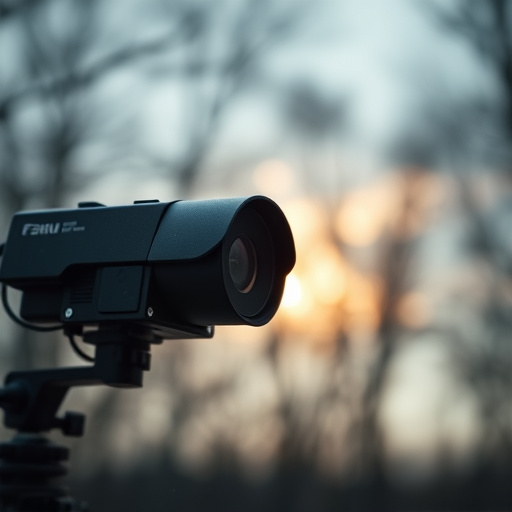In today's digital era, understanding electromagnetic signals is crucial for detecting hidden spy cameras with cloud storage. These signals, often radio frequency (RF), can be identified using specialized equipment for enhanced privacy and security. Balancing protection and accessibility in selecting spy cameras involves looking for strong encryption, high-resolution video, and reliable remote access. Advanced techniques like direction finding and signal amplification improve detection accuracy. Interfering electromagnetic sources from devices like wireless networks require management through shielding or filtering to ensure optimal camera performance. Lastly, legal considerations regarding spy camera use highlight the importance of adhering to privacy regulations to respect individual rights in the digital landscape.
“Uncover the secrets behind effective surveillance device electromagnetic signal detection. In today’s digital age, understanding and leveraging electromagnetic signals is crucial for successful spy camera deployment with cloud storage. This comprehensive guide delves into the fundamentals of signal reception, exploring techniques to enhance accuracy and overcome interference. From choosing the right equipment to addressing ethical concerns, we provide insights on navigating this intricate landscape, ensuring both optimal performance and legal compliance.”
- Understanding Electromagnetic Signals: A Foundation for Detection
- Choosing the Right Spy Camera with Cloud Storage: Features to Look For
- Techniques to Enhance Signal Reception and Accuracy
- Common Interference and How to Mitigate Them
- Ethical Considerations and Legal Implications of Surveillance Device Use
Understanding Electromagnetic Signals: A Foundation for Detection
Electromagnetic signals are an integral part of our modern world, with numerous devices emitting them daily. Understanding these signals is crucial for detecting hidden surveillance devices like spy cameras equipped with cloud storage. Different technologies produce unique signal patterns, making it possible to identify and locate their sources. By familiarizing yourself with the electromagnetic spectrum and common signal types, you can spot anomalies that may indicate the presence of a covert spying setup.
Knowing how to interpret these signals is as vital as understanding their characteristics. Spy cameras often emit signals in the radio frequency (RF) range, which can be detected using specialized equipment. These devices allow users to scan through various frequencies to identify suspicious activity and pinpoint hidden cameras, ensuring privacy and security. With cloud storage, detecting such signals becomes even more critical as it enables remote monitoring and quick response times.
Choosing the Right Spy Camera with Cloud Storage: Features to Look For
When selecting a spy camera with cloud storage, it’s crucial to consider features that ensure both privacy and accessibility. Look for devices with secure encryption protocols to safeguard your data from unauthorized access. Cloud storage integration allows you to remotely view and manage footage, making it essential for seamless access on-the-go via smartphone apps or web interfaces.
Opt for models that offer high-resolution video quality, night vision capabilities, and motion detection alerts. Additionally, consider storage capacity and upload options to accommodate your expected data volume without constant worry about filling up space. A reliable cloud storage system ensures your surveillance footage is readily available when needed, providing peace of mind and robust security for your premises.
Techniques to Enhance Signal Reception and Accuracy
To enhance signal reception and accuracy when detecting electromagnetic signals from spy cameras with cloud storage, consider employing several advanced techniques. First, use direction finding antennas to pinpoint the source of the signal. These specialized antennas can precisely locate the device by analyzing the signal’s direction and strength. Additionally, frequency scanning is essential as many spy cameras operate on specific frequencies. Continuous monitoring across a wide band of frequencies increases the chances of detecting hidden signals.
Implementing signal amplification at the receiver end significantly boosts accuracy. High-gain amplifiers can strengthen weak signals, allowing for clearer detection and identification. Moreover, integrating noise cancellation algorithms into your surveillance system helps minimize interference from external sources, ensuring that the electromagnetic signal from the spy camera remains intact and precise.
Common Interference and How to Mitigate Them
Surveillance devices, especially those with cloud storage capabilities, can be highly effective but are susceptible to interference from various electromagnetic sources. Common interferences include wireless networks, Bluetooth devices, microwaves, and even other surveillance equipment. These signals can disrupt the transmission of data, leading to false positives or even complete signal loss.
To mitigate these issues, it’s crucial to understand the frequency ranges your spy camera operates on and those of potential interference sources. Using RF (radio frequency) shielding or filtering devices can help block unwanted signals. Additionally, positioning the camera away from high-intensity electromagnetic fields, like those generated by powerful wireless routers, can significantly reduce interference. Regularly updating firmware and choosing devices with advanced signal protection features are also smart strategies to ensure optimal performance in various environments.
Ethical Considerations and Legal Implications of Surveillance Device Use
The use of surveillance devices, especially those with cloud storage capabilities, raises significant ethical and legal concerns. As technology advances, spy cameras become increasingly accessible and subtle, allowing for constant monitoring. This invades individuals’ privacy, as even subtle surveillance can capture sensitive information and personal moments. The ethical implications are profound, particularly when these devices are used without consent.
Legally, the use of surveillance devices is governed by strict regulations to protect citizens’ rights. Many countries have laws in place that dictate how and when such equipment can be employed. Unauthorized use or installation of spy cameras, especially in private spaces, can result in severe legal consequences. It’s crucial to understand these rules to ensure compliance and respect for personal privacy.
In the realm of surveillance device electromagnetic signal detection, understanding fundamental concepts and choosing the right equipment are key. Incorporating advanced features like a spy camera with cloud storage enhances privacy protection while ensuring seamless data access. By employing effective techniques to optimize signal reception and addressing common interference sources, users can achieve accurate and reliable monitoring. However, it’s crucial to navigate ethical considerations and legal implications to ensure responsible use of these powerful tools.
